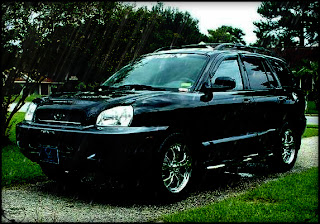

That will wash any remaining air bubbles into the calipers and wheel cylinders. Once all four wheels are bled, "irritate" the brake pedal a few times by pushing it down about an inch by hand. When it does, close that bleeder screw, then do the same thing for each next wheel as the fluid shows up. Simply open all four bleeder screws, loosen the cap on the reservoir to prevent vacuum from building as the fluid tries to run down, then wait for the fluid to start dripping from one wheel. That is the only method I have used for over twenty five years. Be sure to not let the reservoir run empty or you will have a lot of bleeding to do.Īll of the problems can be avoided by gravity-bleeding the system. Loosen the reservoir cap and let the fluid run through on its own. If you are just doing this recommended fluid maintenance, open one bleeder screw at a time and to avoid making a mess, stick a hose onto it and run the hose into a bottle. If all you did was replace brake pads, there is no need to do any bleeding, although all manufacturer do have a recommended time interval to replace the brake fluid to get the moisture out that it has absorbed. You do not want to force any more air into the line than you have to because it will just have to be bled back out again.

The goal is just to move that valve in the master cylinder. The fix for that blocked fluid flow is to open that bleeder screw, loosen the cap on the reservoir, then give a very short, quick blast of compressed air to that bleeder screw. That would explain the no fluid at the right rear. If you have that design and the right rear wheel was bled first, that valve would have tripped as soon as the brake pedal was pressed with the bleeder screw open. That prevents a total loss of brake fluid. The next concern is some master cylinders have a valve inside that trips to block fluid flow to one or two wheels when a leak develops, as in a rusted steel line or ruptured flex hose. That will lead to internal leakage and a slowly sinking brake pedal, and that may not show up for a few days. When the pedal is pushed further than normal the pistons run over that crud and the lip seals can be ripped. Crud and corrosion build up in the lower halves of the bores where the pistons do not normally travel. The brake pedal must never be pushed more than halfway to the floor, unless the master cylinder is less than about a year old.
#2003 HYUNDAI SANTA FE WHERE TO PUT BRAKE FLUID IMAGE HOW TO#
Here is a complete guide on how to bleed brakes and flush them:Īn issue is you likely used a helper to pump the brake pedal and he pushed it to the floor. It sounds like you have a plugged bleeder, try to remove it all the way.


 0 kommentar(er)
0 kommentar(er)
